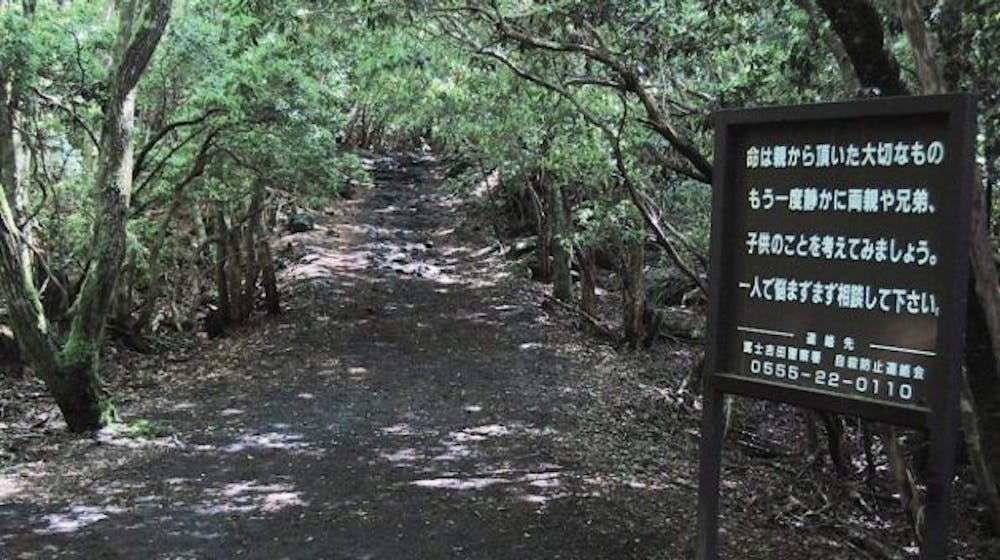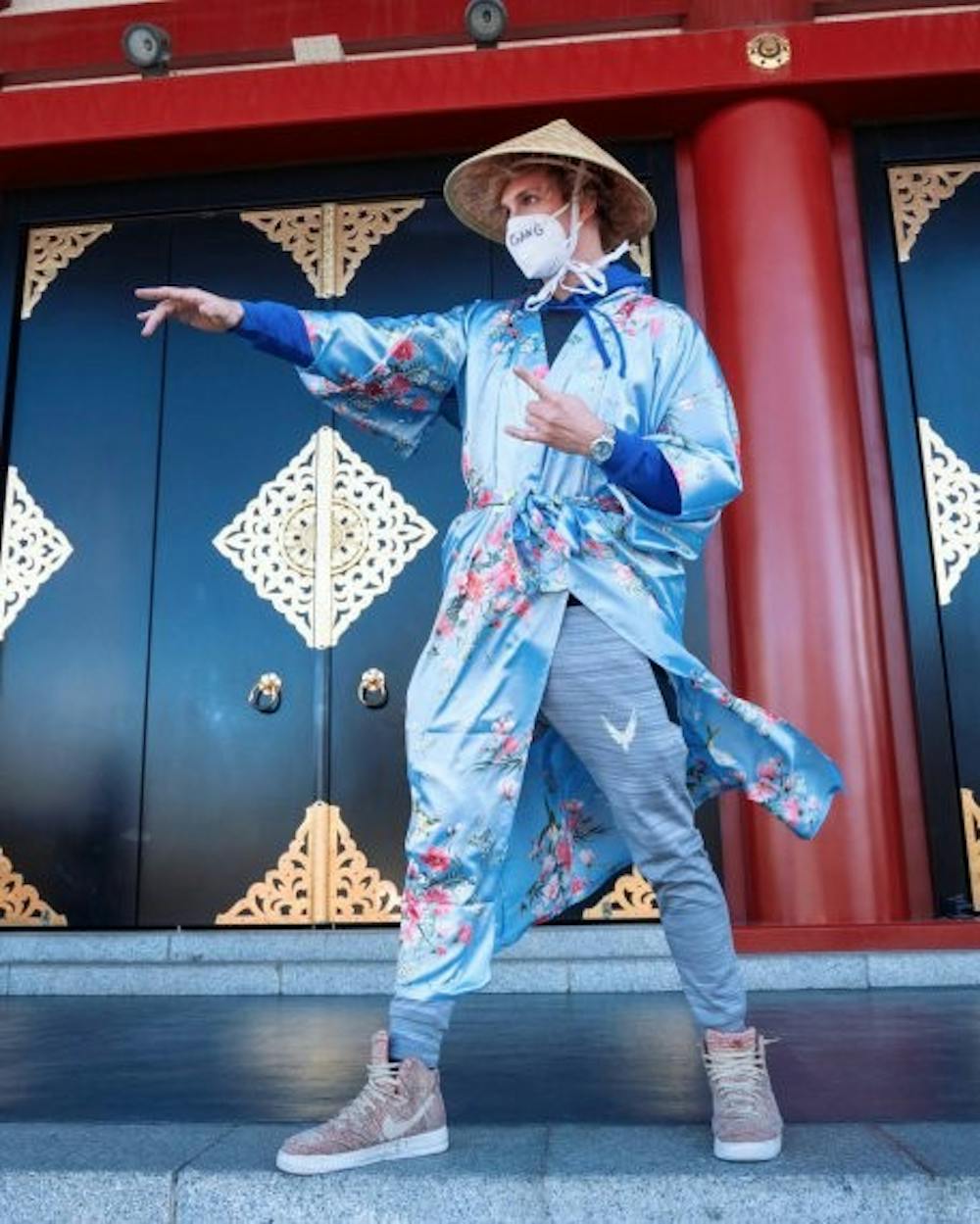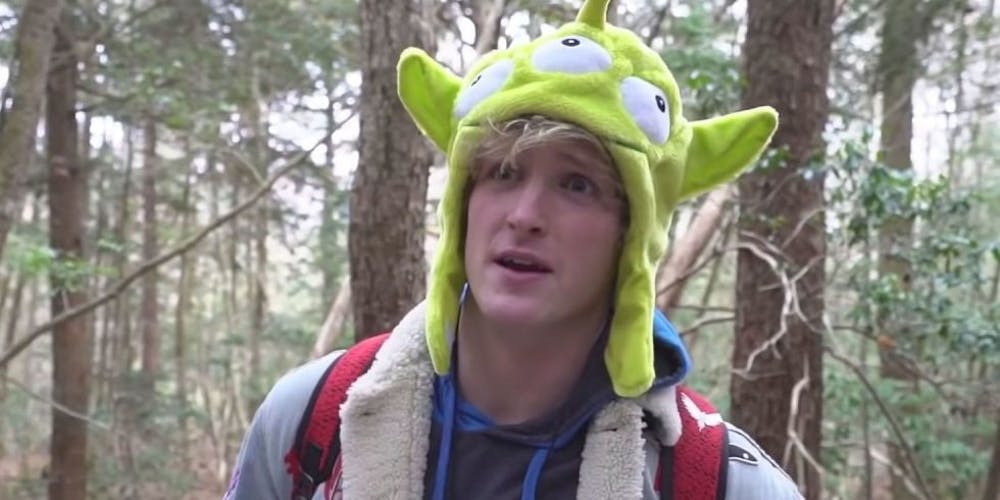In the wake of the new year, Logan Paul has recently had his YouTube Red series put on hold and was removed from Google’s preferred advertisement program as a result of public backlash over a video that featured an apparent suicide victim in Japan.
The video has resulted in a massive online controversy over the past two weeks sparking debate over the ethics of showing a suicide victim on camera. Many YouTube creators have joined in the outrage, taking to social media and making their own videos directed at Logan Paul.
Many of the criticisms of Paul’s now infamous video fail to take into account the culture of Japan. What is the Japanese view toward suicide? What is Aokigahara? How does the Japanese view of privacy come into play? As these questions are further explored, Logan’s video becomes more offensive.
Who is Logan Paul?
To really understand why this video garnered the attention that it did, it is important to learn about who made the video in the first place. Logan and his younger brother, Jake Paul, initially garnered their fame in 2013 on Vine, the now discontinued video service where users would share six second videos which challenged users to create short stories with a limited allotment of time. This resulted in many quickly paced, high energy, attention grabbing videos finding success on the platform.
These videos resulted in Logan accumulating a whopping 9.4 million followers on Vine. According to an article from Business Insider, by 2015 Logan was the tenth most popular Vine Star.
In August 2015, Logan started his vlog (video blog) channel on YouTube resulting in his large fan base migrating to the popular video sharing website. Here Paul would continue to create video content on his two channels: TheOfficialLoganPaul and Logan Paul Vlogs. Currently Logan’s Official channel has around 4.3 million subscribers while his vlog channel has over 15 million subscribers. When taking into account the Paul Brother’s and their six associated YouTube channels, collectively they have nearly 7 billion views, with each of the brother’s main channels boasting over 3 billion apiece.
In short, Logan has obtained a massive following, which is no easy feat. His high-energy, loud, often shirtless pursuits carried over from Vine onto YouTube with ease. Typically, these videos involve public hijinks, pranks, somewhat dangerous stunts, an array of music videos, reactions, and a few Vine compilations.
However, more recently Logan has found himself making apology videos instead of his usual stunts.
This monetized apology video is a direct result of Logan’s recent trip to Japan. While there, Logan continued his shtick of acting eccentrically in public. Due to his behavior while crafting these vlogs, Logan’s ventures in Japan have become somewhat controversial. Leading up to the the now infamous suicide forest video, Logan filmed other vlogs with him and his causing disruptions around Japan. This includes actions such as running around dressed as Pokemon, throwing objects at moving cars, being kicked out of a shrine, jumping on the back of moving vehicles, and placing dead fish on the back of a taxi.
Many excuse these behaviors as Logan simply acting on his brand. Unfortunately for Logan, many are not as sympathetic regarding his venture to Aokigahara more commonly known as ‘The Seas of Trees’ or ‘The Suicide Forest’.
Aokigahara, “The Sea of Trees”
Upon entering Aokigahara, visitors are met with this sign:

Image from Historic Mysteries
According to the Washington Post, this sign translates to:
Quietly think once more about your parents, siblings, or children. Please don’t suffer alone, and first reach out.
Aokigahara is famous for being one of the most popular suicide sites in Japan, a country known for its relatively high suicide rates.
Despite the grim reputation, Aokigahara is often a popular travel site for tourists and locals alike. The beautiful scenery and what many call a unique “spiritual experience” entices many to venture into the ominous forest. Others, like Logan Paul, are more interested in capturing the haunting atmosphere on camera.
On January 1st, Logan uploaded a video to YouTube titled “We found a dead body in the Japanese Suicide Forest…” featuring a thumbnail of a suicide victim. The video begins with Logan stating, “This is not clickbait. This is the most real vlog I’ve ever posted on this channel and this is the most circumstantially surreal event that has ever happened in my life.” Paul then goes on to assure his viewers that the video is not monetized and that he’s “pretty sure” this video marks a moment in YouTube history.
And Logan was right. The intense backlash that ensued does mark a grim moment in YouTube history. What caused the reaction? After straying from the designated path in the forest, Logan and his crew stumble upon a man who had taken his own life and uploading the experience on YouTube.
Shortly after the video was published, the internet was quick to react. In response to the growing controversy, the video was taken down from YouTube, and Logan issued an apology on Twitter:
Despite the apology message, many popular YouTubers remained unsympathetic. However, YouTubers aren’t the only ones with a strong opinion. Before moving to the States, Ball State student Kohaku Clark was born in Japan. Clark moved back to Japan during their third grade year and is thus familiar with the culture. When asked about their initial to the reaction when seeing the video, Clark said the first thought they had was “Wow what an asshole.” Clark continued,”…After I heard about it I watched a bunch of videos of some Japanese YouTubers, [and]saw how they thought about the situation. I agreed with a lot of the things they said.”
With so many people upset at the video, Logan released another apology, this time in the form of his “So Sorry.” YouTube video. Though the video in question had been removed and two public apologies had been issued, the criticisms continued. YouTube released a statement on the situation shortly after.
YouTube then gave Logan a strike on his channel. However, on Wednesday YouTube announced that they would be taking further action against Logan by suspending production of a sequel to Logan’s movie “The Thinning: New World Order” as well as his advertising revenue. The YouTube Red show, “Foresome” will also be dropping Paul from the series.
Japan and suicide
So Logan did something disrespectful in an inappropriate place, got called out for it, and was eventually punished. What’s the big deal? Kohaku Clark chimes in saying “…you don’t really need to be Japanese to go to Japan and understand the culture to know that suicide and death is nothing to make light of. It’s disrespectful no matter where you are because someone somewhere has gone through the death of friends or some neighbor that has gone through these situations.”
Clark continued, saying, “Suicide has honestly been a big part of Japan and Japan’s history… it’s been glorified in a sense.” Japan has spent years trying to subdue one of the world’s highest suicide rates. A 2014 article posted by The Japan Times indicates that during that year, the suicide rate in 2012 was around 60 percent higher than the global average. Clark recounted how suicide has had a long history in Japanese culture. Suicide goes back to the time of the samurai tradition. “…if they were dishonored at all they would have to commit a ceremonial suicide known as “seppukku”. Connecting suicide to more modern times, Clark said, “A good example would be of world war II and the kamikaze pilots. Their whole thing was literally dying for their country and committing suicide in the process. And after the war almost everybody who was involved committed suicide.” Since the end of World War II, suicide in Japan became less common, but it is a problem that plagues the country to this day.
Clark continued, “I blame societal stressed because you’re pushed to get a good job and keep that job, and to keep that job you have to keep busy and keep working. So you don’t have time for yourself. Birth Rates are decreasing because they’re more focused on work more than love and family.”
In regards to Aokigahara’s suicide rates Alexa Keefe’s National Geographic article states that:
After a high number of suicides were reported in 2004 (a total of 108), officials stopped publicizing deaths for fear of glorifying the practice. Yamanashi prefecture, where the forest is located, began hiring people in 2009 to patrol the forest and approach anyone who might not look like the average tourist out on a hike.
This statement is important in analyzing the effect of Logan’s video. When death rates began to spike in 2004, an effort was made to stop publicizing deaths to avoid suicide contagion. The U.S. Department of Health & Human Services describes suicide contagion as the following:
Suicide contagion is the exposure to suicide or suicidal behaviors within one’s family, one’s peer group, or through media reports of suicide and can result in an increase in suicide and suicidal behaviors. Direct and indirect exposure to suicidal behavior has been shown to precede an increase in suicidal behavior in persons at risk for suicide, especially in adolescents and young adults.
In short, the media can have a negative impact on suicide awareness. This is why shows like 13 Reasons Why are so controversial; showing a person on-screen who has taken their life can inadvertently increase the risk of adolescents taking their own life.
Logan Paul makes the assertion in his video and in his subsequent apologies that his goal in uploading the video was to raise mental health awareness, but this ideology goes directly against professional advice given by the The U.S. Department of Health & Human Services. By prolonging the exposure of the body on camera, Logan has engaged in promoting suicide contagion rather than the catharsis he claims. To go to a country with high suicide rates and then proceed to film the experience of finding a body while laughing and giggling minimizes the need for proper suicide awareness.
The importance of privacy in Japan
We’ve talked about the error in Logan’s judgement regarding posting the video in the name of mental health, but the issue goes much deeper. Japan is a country that highly values privacy so much so that laws about public photography and filming reflect this. Unlike in the United States where photographing in public is a normal part of everyday life, Japan’s laws are more rigid. These laws boil down to the idea that humans have the right to privacy and should not be the focus of filming without prior consent.
In Logan’s case, his solution was to blur out the face of the body. While he will most likely avoid legal consequence for filming the body, doing so shows a lack of respect for the person being filmed. Aokigahara is often where people go for privacy. Many people that go with the intent to end their lives are never found, and this is a purposeful decision on their part. The seclusion offered in Aokigahara can allow for an honorable death without shame. It is likely that the person Logan stumbled upon would have been mortified to be in a viral video, even with his face blurred.
Logan’s video dehumanizes the suicide victim by focusing on them and posting their likeness for the world to see. Had Logan cared to understand the Japanese view of privacy, he would not have posted the video at all.
Wanting to travel to Japan? Logan’s made it a lot harder on foreigners
Aside from exposing his young, impressionable audience to a suicide contagion, Logan’s actions have consequences for foreigners wanting to travel or work in Japan. Being a foreigner abroad means that people see you as a representative of your entire country. American stereotypes in Japan usually consist of loud people who do not overly concern themselves with good manners or politeness. Even more concerning than the thought of playing into negative stereotypes is the widely believed thought that Americans are unable to respect or understand Japanese culture. Sound familiar?

Image from Twitter
For many Japanese, Logan’s actions in Japan prove these negative stereotypes to be true. This makes American relationships with Japanese people far more difficult. Already, some Japanese bars and shops do not allow service to foreigners due to these beliefs. For Logan Paul to act so disrespectfully and without regard for Japanese social norms, many Japanese people have hardened their stances about foreigners.
This isn’t just about a rich YouTuber acting out. Incidents like this have real world ramifications that effect all Americans. He has shown the world that Americans don’t respect Japanese privacy, that suicide is something to make a profit from, and that Americans don’t know how to behave abroad.
In the end, this is one issue that a few lukewarm apologies and dabbing on the haters just can’t resolve.
Sources: Japan Times, Business Insider, National Geographic, The Washington Post, World Health Organization, YouTube, Twitter, HHS.gov, Vine
Images: ghanadailies.com, Historic Mysteries, Twitter



















